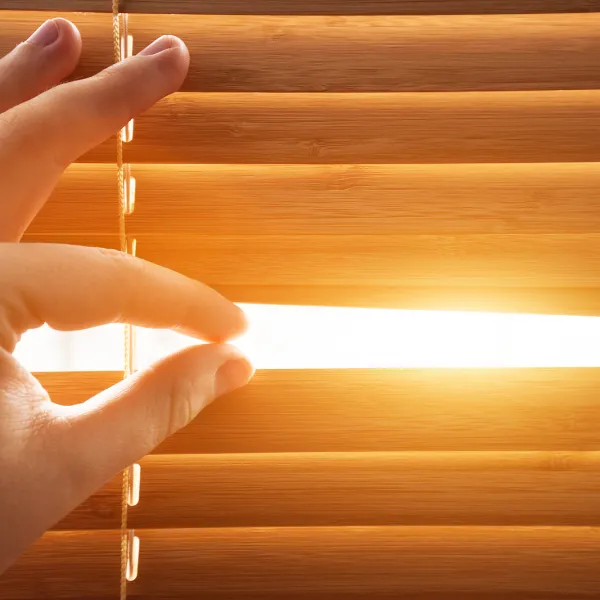If you’re trying to beat the heat inside your home, energy-saving window treatments will go a long way in reducing the amount of heat streaming into your home. Closing curtains can help cool the interior, save money on utility bills and lessen the wear and tear on your HVAC system.
While window treatments make the interior and exterior of your home more visually appealing, you can also use curtains to their fullest potential by turning them into money-saving resources.
Awnings
For regions that experience excessive heat, light-colored exterior awnings are the first line of defense. Available in numerous styles, sizes and colors, exterior awnings are versatile, durable, decorative and reduce solar heat gain significantly. This is especially true for windows that face west or south. In fact, Energy.gov estimates a reduction in heat gain during the summer by around 65 percent on windows facing south and by as much as 77 percent on windows facing west. Along with interior heat reduction resulting in lower utility bills, exterior awnings add value to your home along with curbside appeal.
Blinds
Whether you choose standard slatted blinds or vertical blinds, both interior and exterior installation reduces solar heat gain. Although interior blinds are generally installed to provide privacy, light and adequate ventilation, when light colors are chosen, such as white, ivory, off-white or cream, the blinds will reflect the heat while still providing air, light and privacy. Like awnings, blinds provide the best reduction in heat gain to windows facing south or west. According to Energy.gov, “Highly reflective blinds can reduce heat gain by around 45 percent.”
If exterior blinds are an option, they are extremely effective because they block the streaming heat before it has an opportunity to enter your home. By keeping the heat outside, it doesn’t have a chance to heat up interior rooms.
Drapes: More Than Décor
Drapes can add a delicate, elegant or dramatic touch to your decor. In addition, closing curtains can reduce solar heat loss during the winter season and solar heat gain during the summer months when you choose the appropriate fabric color and weight. Select medium-colored fabric drapes that are lined with white plastic for optimum energy-saving results. Like window shades, drapes need to be installed snugly against the window, creating a seal to prevent heat from entering when temperatures are rising and escaping when temperatures drop.
Versatile Window Shades
Flexibility and versatility are two ways to describe interior window shades. When installed properly, window shades are an effective way to lower heat gain and heat loss. When choosing your window shades, select those with dual fabric layers of light and dark material. In the summer, the lighter colored fabric will reflect heat. During the winter, reverse the shades so the darker color can absorb heat. Installation plays an important role, too. Shades need to be installed to create a “frame” effect. This means the shades should be flush with the wall or the inside window frame, depending on the type of windows in your home, and close to the glass.
Window Tint/Reflective Film
If you live in regions that experience a long season of hot temperatures, reflective film is another option to reduce heat. Reflective film that is transparent or light-colored is available to allow maximum visibility and keep heat out. The most effective reflective film is a high performance silver film that can reduce excess heat by up to 80 percent.
If it’s time to replace old and inefficient windows, consider low-E glass from Infinity from Marvin fiberglass windows . Low-E, also known as low-emissivity, can reduce heat penetration and lower your monthly utility bills.
If you have questions on window treatments, contact us for more information.




